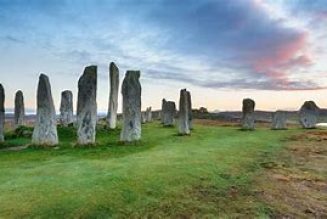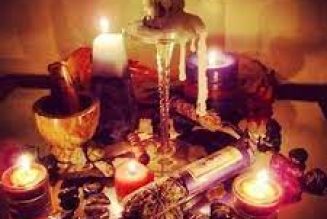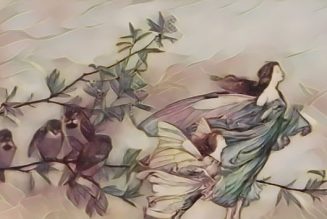An Ancient Solar Celebration Nearly every agricultural society has marked the high point of summer in some way, shape or form. On this date–usually around June 21 or 22 (or December 21/22 in the southern hemisphere)–the sun reaches its zenith in the sky. It is the longest day of the year, and the point at which the sun seems to just hang there without moving – in fact, the word “solstice” is from the Latin word solstitium, which literally translates to “sun stands still.” The travels of the sun were marked and recorded. Stone circles such as Stonehenge were oriented to highlight the rising of the sun on the day of the summer solstice. Traveling the Heavens Although few primary sources are available detailing the practices of the ancient Celts, some information can be found in the chronicles kept by early Christian monks. Some of these writings, combined with surviving folklore, indicate that Midsummer was celebrated with hilltop bonfires and that it was a time to honor the space between earth and the heavens. Angela at A Silver Voice says that midsummer, or St. John’s Eve, was often celebrated in Ireland with the lighting of huge bonfire. She points out that this is an ancient custom rooted in a Celtic tradition of lighting fires in honor of Áine, the Queen of Munster, Festivals in her honour took place in the village of Knockainey, County Limerick (Cnoc Aine = Hill of Aine ). Áine was the Celtic equivalent of Aphrodite and Venus and as is often the case, the festival was ‘christianised’ and continued to be celebrated down the ages. It was the custom for the cinders from the fires to be thrown on fields as an ‘offering’ to protect the crops. Fire and Water In addition to the polarity between land and sky, Litha is a time to find a balance between fire and water. According to Ceisiwr Serith, in his book The Pagan Family, European traditions celebrated this time of year by setting large wheels on fire and then rolling them down a hill into a body of water. He suggests that this may be because this is when the sun is at its strongest yet also the day at which it begins to weaken. Another possibility is that the water mitigates the heat of the sun, and subordinating the sun wheel to water may prevent drought. Christians have chronicled the rolling of flaming (solar) wheels since the Fourth Century of the Common Era. By the 1400’s the custom was specifically associated with the Summer Solstice, and there it has resided ever since (and most likely long before)… The custom was apparently common throughout Northern Europe and was practiced in many places until the beginning of the Twentieth Century. When they arrived in the British Isles, the Saxon invaders brought with them the tradition of calling the month of June. They marked Midsummer with huge bonfires that celebrated the power of the sun over darkness. For people in Scandinavian countries and in the farther reaches of the Northern hemisphere, Midsummer was very important. The nearly endless hours of light in June are a happy contrast to the constant darkness found six months later in the middle of winter. Roman Festivals The Romans, who had a festival for anything and everything, celebrated this time as sacred to Juno, the wife of Jupiter and goddess of women and childbirth. She is also called Juno Luna and blesses women with the privilege of menstruation. The month of June was named for her, and because Juno was the patroness of marriage, her month remains an ever-popular time for weddings. This time of year was also sacred to Vesta, goddess of the hearth. The matrons of Rome entered her temple on Midsummer and made offerings of salted meal for eight days, in hopes that she would confer her blessings upon their homes. Midsummer for Modern Pagans
Litha has often been a source of contention among modern Pagan and Wiccan groups, because there’s always been a question about whether or not Midsummer was truly celebrated by the ancients. While there’s scholarly evidence to indicate that it was indeed observed, there were suggestions made by Gerald Gardner, the founder of modern Wicca, that the solar festivals (the solstices and equinoxes) were actually added later and imported from the Middle East. Regardless of the origins, many modern Wiccans and other Pagans do choose to celebrate Litha every year in June.
In some traditions, Litha is a time at which there is a battle between light and dark. The Oak King is seen as the ruler of the year between winter solstice and summer solstice, and the Holly King from summer to winter. At each solstice they battle for power, and while the Oak King may be in charge of things at the beginning of June, by the end of Midsummer he is defeated by the Holly King.
This is a time of year of brightness and warmth. Crops are growing in their fields with the heat of the sun, but may require water to keep them alive. The power of the sun at Midsummer is at its most potent, and the earth is fertile with the bounty of growing life.
For contemporary Pagans, this is a day of inner power and brightness. Find yourself a quiet spot and meditate on the darkness and the light both in the world and in your personal life. Celebrate the turning of the Wheel of the Year with fire and water, night and day, and other symbols of the opposition of light and dark.
Litha is a great time to celebrate outdoors if you have children. Take them swimming or just turn on the sprinkler to run through, and then have a bonfire or barbecue at the end of the day. Let them stay up late to say goodnight to the sun, and celebrate nightfall with sparklers, storytelling, and music. This is also an ideal Sabbat to do some love magic or celebrate a handfasting, since June is the month of marriages and family.






















